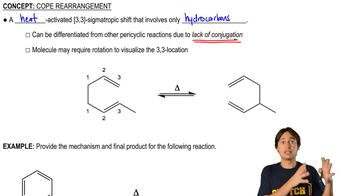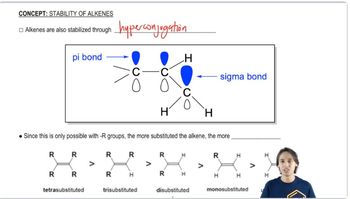Show how you would accomplish the following synthetic conversions.
(d) 2−methylbutan-2-ol → 2-bromo-3-methylbutane
 Verified step by step guidance
Verified step by step guidance Verified video answer for a similar problem:
Verified video answer for a similar problem:



 4:39m
4:39mMaster Heterolytic vs. Homolytic Bond Cleavage . with a bite sized video explanation from Johnny
Start learning